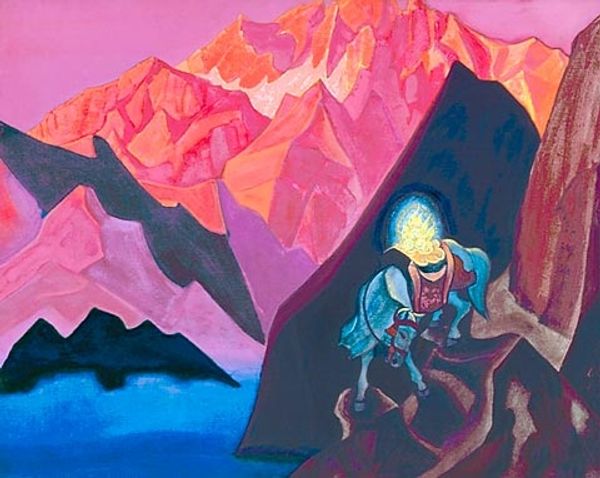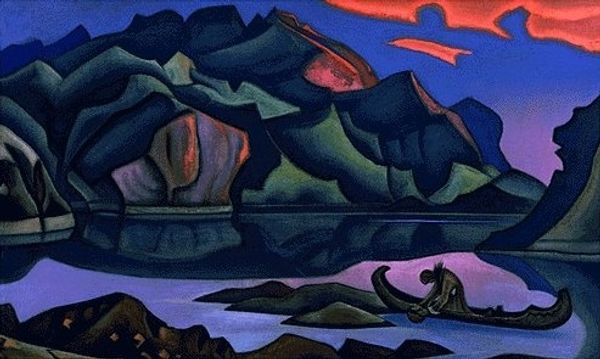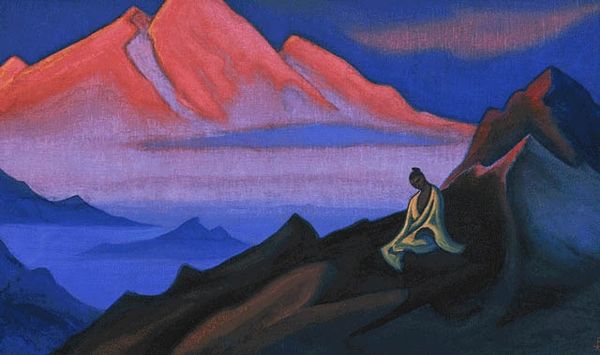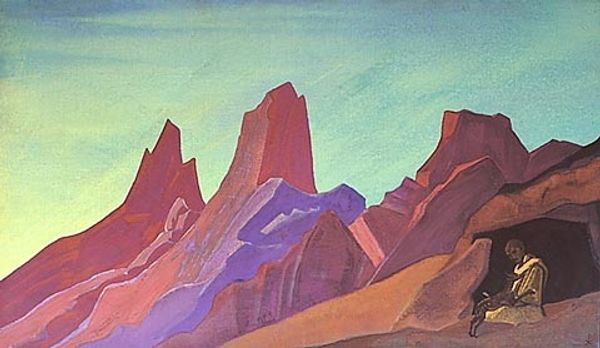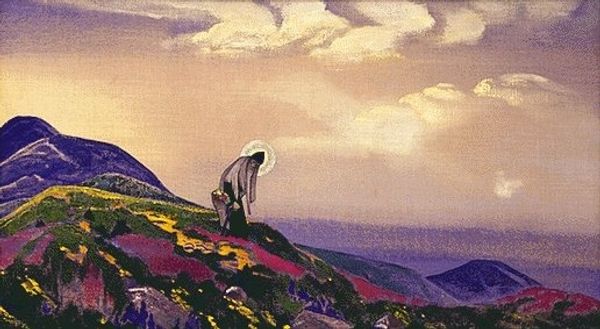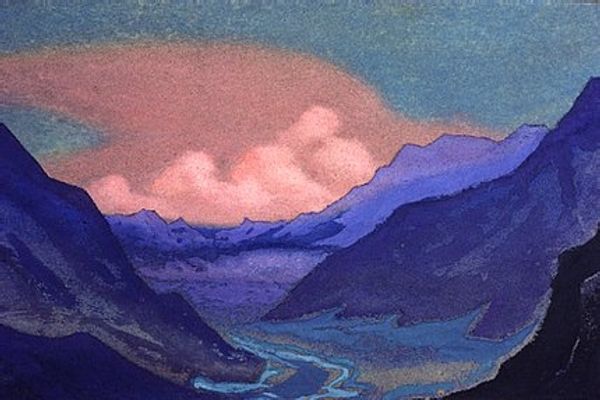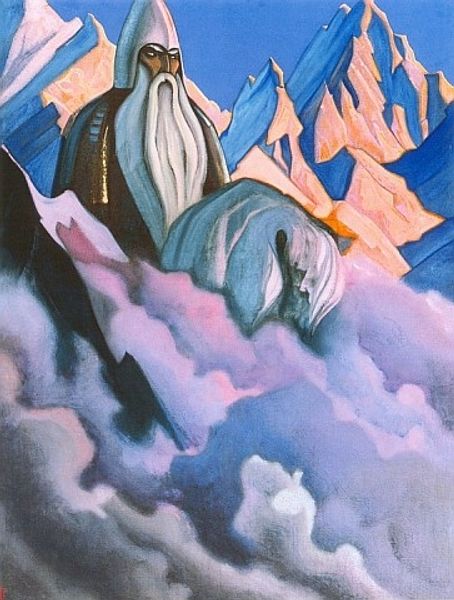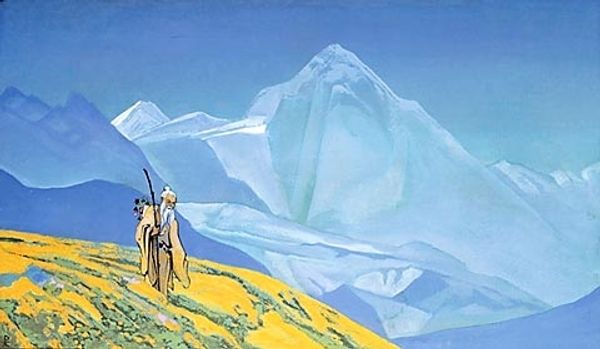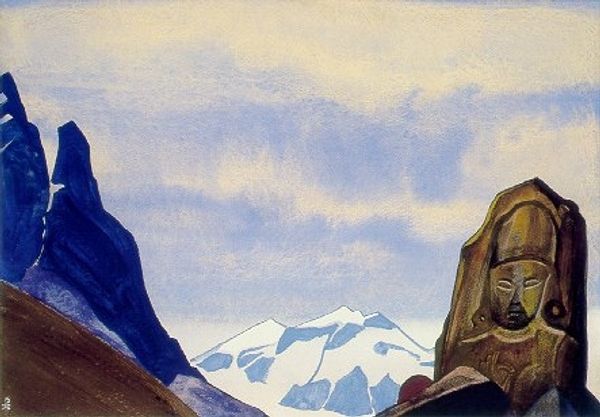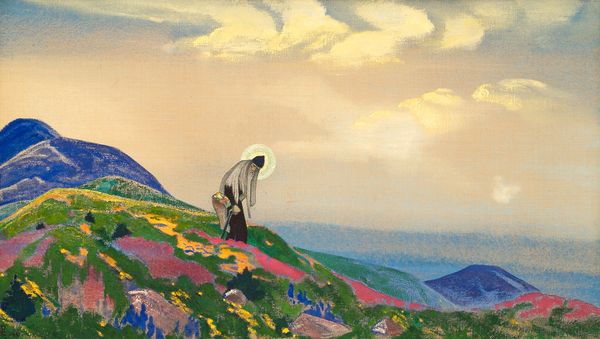
Copyright: Public domain
Editor: This is Nicholas Roerich’s "Mohammed on Mount Hira," painted in 1925 using oil paint. I’m struck by the intense contrast between the vibrant, almost fauvist, sky and the stark, angular shapes of the mountains. It's quite dreamlike. What are your initial thoughts on the visual composition of this work? Curator: Indeed, the dramatic juxtaposition of color is paramount. The ethereal pink sky clashes, yet also harmonizes, with the deeply saturated blues of the mountains. Notice how the artist uses line to define the peaks, creating a sense of both monumentality and fragility. The figure, almost a mere sliver of light, adds to the structural tension. How does the placement of the figure relative to the landscape inform your reading? Editor: I hadn't considered the figure’s size. Being so small emphasizes the overwhelming scale of the mountains, almost making him insignificant against such a landscape. Does the artist use that to convey a message? Curator: The reduction of the figure to a formal element underscores the power of nature and perhaps, a humbling spiritual experience. It minimizes narrative, urging us to focus on the formal relationships. Note the repetitive triangular forms throughout. How does that affect the overall composition? Editor: Now I see it, that angular motif! It creates a rhythm, almost like the mountains are breathing, or echoing the figure's presence up towards the sky. That almost turns the painting into a more dynamic landscape… Curator: Precisely. And how does Roerich utilize color to enhance this rhythm? Editor: The limited palette of blues and pinks creates unity while still allowing for striking contrast. It avoids becoming chaotic, emphasizing the structural simplicity despite the dramatic scene. Curator: Roerich masterfully employed a symbolic representation through stark geometry and a strategic color palette. Did that open new perspectives? Editor: Definitely, focusing on structure reveals so much that I initially overlooked; it really is so helpful in understanding art like this.
Comments
No comments
Be the first to comment and join the conversation on the ultimate creative platform.
